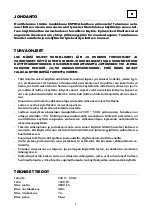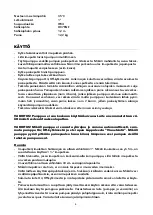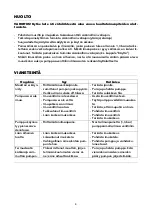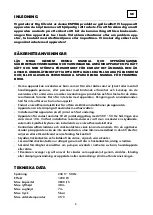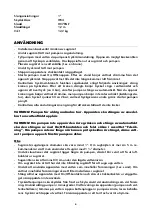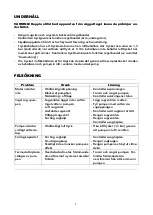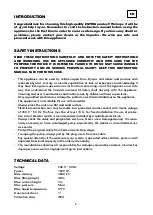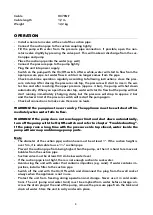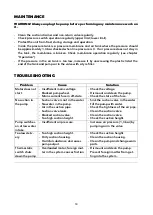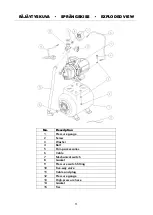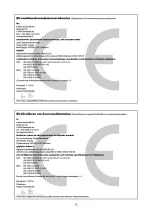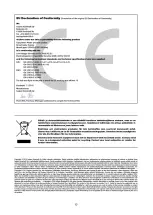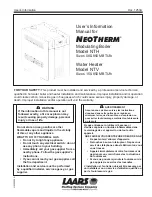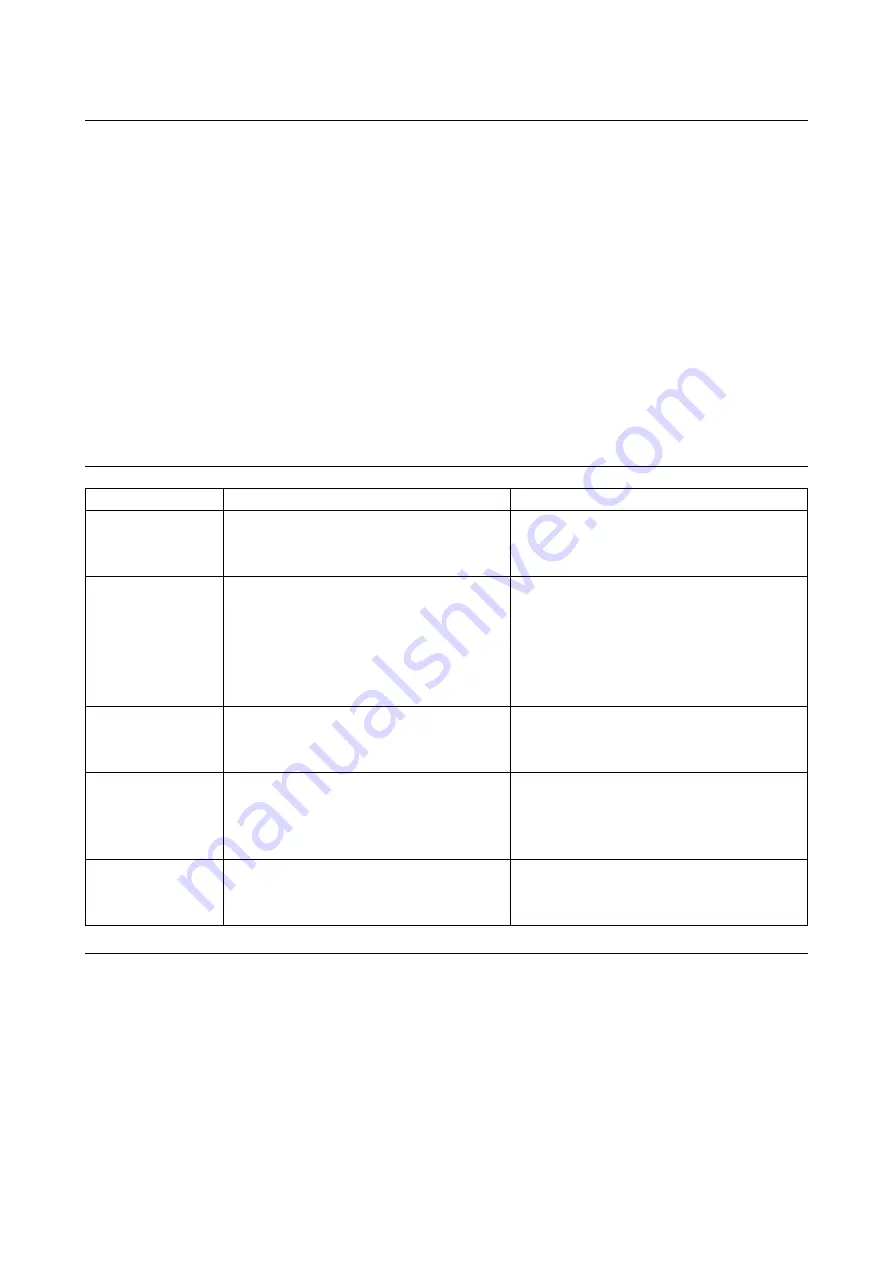
MAINTENANCE
WARNING! Always unplug the pump before performing any maintenance work on
it.
-
Clean the suction strainer and non-return valve regularly.
-
Check pressure switch operation regularly (upper limit/lower limit).
-
Protect the unit from frost during storage and operation.
-
Inside the pressure tank is a pressure membrane and air tank where the pressure should
be approximately 1,3 bar checked when line pressure is 0. If air pressure does not stay in
the tank, the membrane is broken. Check membrane operation regularly (see chapter
”Operation”).
-
If the pressure in the air tank is too low, increase it by unscrewing the plastic lid at the
end of the tank and pump air in the valve with a tyre filler.
TROUBLESHOOTING
Problem
Cause
Solution
Motor does not
start.
-
Insufficient mains voltage.
-
Blocked pump wheel.
-
Mains current fuse in off-state.
-
Check the voltage.
-
Dismount and clean the pump.
-
Check the state of the fuse.
No suction in
the pump.
-
Suction valve is not in the water.
-
No water in the pump.
-
Air in the suction pipe.
-
Suction valve leaks.
-
Blocked suction valve.
-
Too high suction height.
-
Sink the suction valve in the water.
-
Fill the pump with water.
-
Check the tightness of the air pipe.
-
Clean the suction valve.
-
Clean the suction valve.
-
Check the suction height.
Pump switches
on at low water
intake.
-
Insufficient air pressure.
-
Increase air pressure (1,3 bar) by
pumping air in the valve.
Too low deliv-
ery.
-
Too high suction height.
-
Dirty suction housing.
-
Harmful substance decreases
pump output.
-
Check the suction height.
-
Clean the suction housing.
-
Clean the pump and change worn
parts.
Thermostatic
switch shuts
down the pump.
-
Overloaded motor, foreign mat-
ter in the system causes friction.
-
Dismount and clean the pump.
Prevent foreign matter from get-
ting into the system.
10


